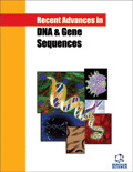Abstract
Forensic DNA Phenotyping (“FDP”), estimating the externally visible characteristics (“EVCs”) of the source of human DNA left at a crime scene, is evolving from science fiction toward science fact. FDP can already identify a source’s gender with 100% accuracy, and likely hair color, iris color, adult height, and a number of other EVCs with accuracy rates approaching 70%. Patent applications have been filed for approaches to generating 3D likenesses of DNA sources based on the DNA alone. Nonetheless, criminal investigators, particularly in the United States, have been reticent to apply FDP in their casework. The reticence is likely related to a number of perceived and real dilemmas associated with FDP: is FDP racial profiling, should we test unknown and unseen physical conditions, does testing for behavioral characteristics impermissibly violate the source’s privacy, ought testing be permitted for samples from known sources or DNA databases, and should FDP be limited to use in investigations only or is FDP appropriate for use in a criminal court. As this article explains, although those dilemmas are substantive, they are not insurmountable, and can be quite easily managed with appropriate regulation and protocols. As FDP continues to develop, there will be less need for criminal investigators to shy away from FDP. Cold cases, missing persons, and victims in crimes without other evidence will one day soon all be well served by FDP.
Keywords: Criminal investigations, criminal courts, DNA databases, dilemma, forensic DNA phenotyping, genetic testing.
 108
108











